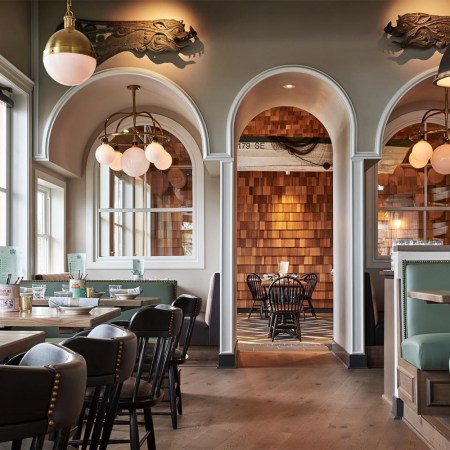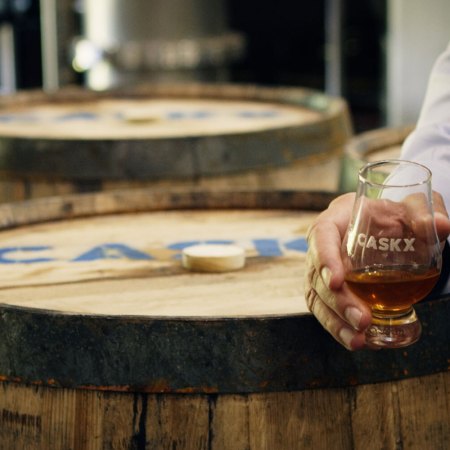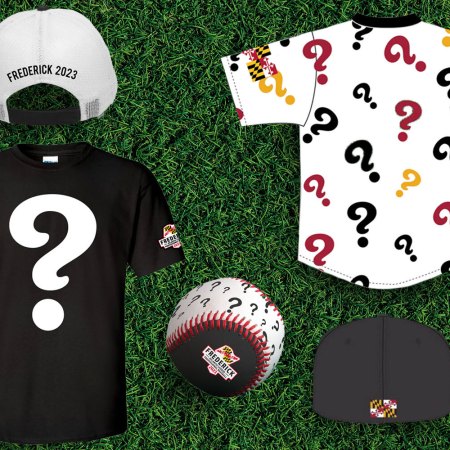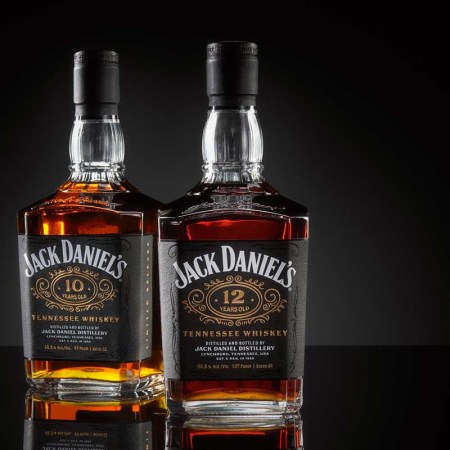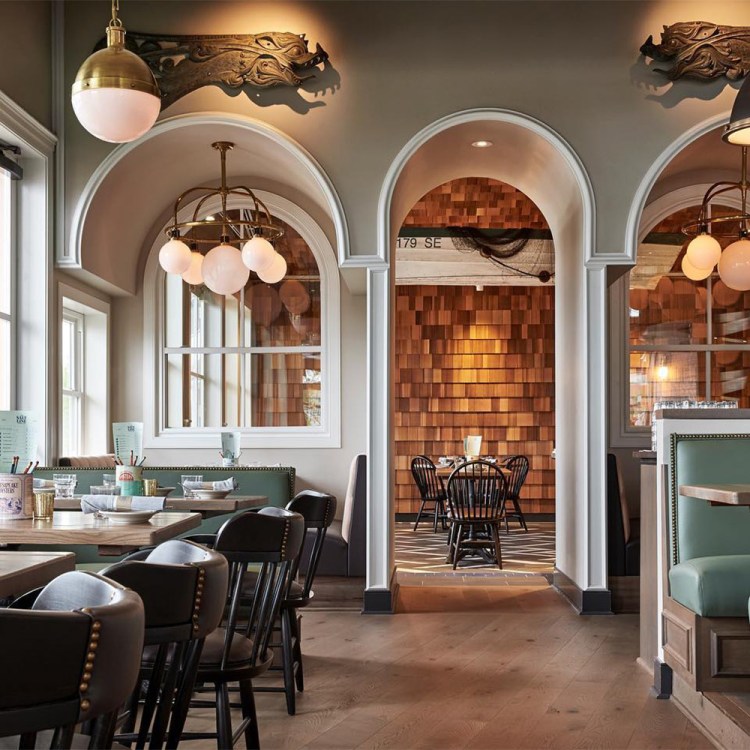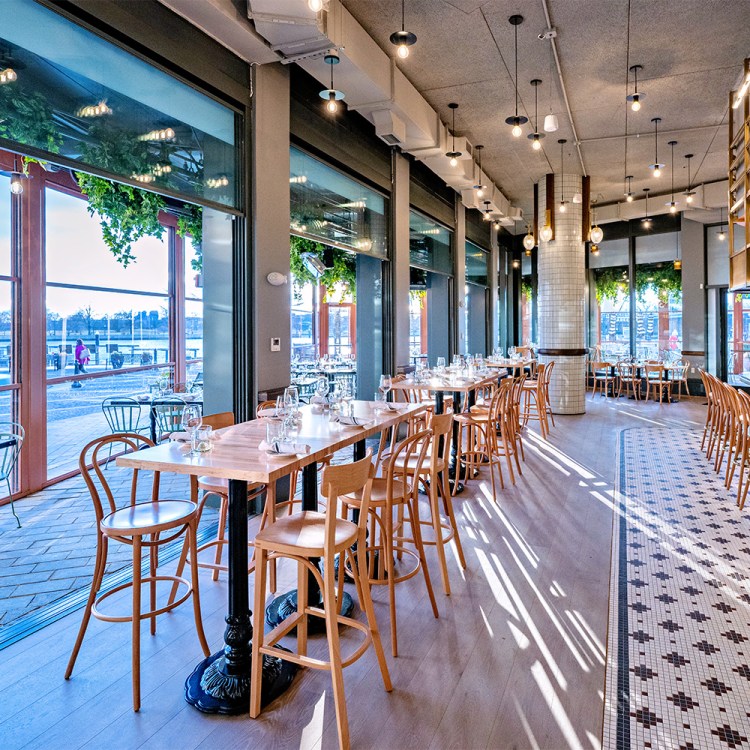Your current perception of science experiments may include sheep cloning, or perhaps your kid’s papier-mâché volcano, but there’s a new kind of technology-driven concoction happening at the Quadrant Bar & Lounge at The Ritz-Carlton, Washington, D.C. that might just shift your thinking on the subject.
They’re the only ones in the city experimenting with sound-aging whiskey, a process that plays with the concept of time to bring you (what tastes like) a 20-year bourbon in only 30 minutes.
“Quadrant kind of started off as an experiment. You know, we’re a little different than a traditional Ritz-Carlton bar,” says Chris Mendenhall, lead mixologist and crazy scientist extraordinaire. “What started off as an experiment [will] hopefully become the norm throughout the company.”
Mendenhall tells InsideHook that Quadrant Bar & Lounge pretty much focuses on three things, the first being classic cocktails and the stories behind them. The second is culinary-inspired original cocktails that have gastronomical science elements of their own, like infusions of smoked jalapeños into agave nectar and a house-made pepper gin. He even says they’re using techniques one would primarily expect to find in the kitchen, like sous vide.

And the third? Well, that’s where the process of sound-aging comes in. A relatively new technology, it’s the process of applying the pressure of ultrasound waves to liquor to mimic the effects of time and impart flavor characteristics that you’d typically get when barrel-aging a spirit for years, or even decades.
For now it’s pretty rare to find a distillery that’s adopted the technology, save a few, such as Cleveland Whiskey, where they’re using pressure to replicate the aging process, and Copper & Kings, which has five subwoofers in their basement constantly pulsing bass notes through their brandy. Mendenhall and his team at Quadrant Bar & Lounge aren’t trying to mimic the exact processes one might find at a distillery, though — he insists that they’re merely playing around and having fun, and hopefully educating guests on what aging and barrel type actually contribute to the flavor and quality of whiskey along the way.
“People often come in and ask us questions about whiskey, what the different types are and how the aging process affects the final product. We found this as a fun, cool, approachable tool to hopefully help them enjoy it,” says Mendenhall. “We’re really not aging whiskey, what we’re doing is imparting characteristics of time.”
There are two ways to experience a sound-aged product at Quadrant Bar & Lounge, the first being a set of two-ounce pours called the “base” and the “change.” This allows guests to see, smell and taste the difference that sound-aging makes on whiskey for themselves, running $18-20 per pair. For example, their Bourbon Style #2 starts out as an undisclosed seven-year Kentucky bourbon that they then expose to new American Oak soaked in port — blasting it with 20,000 pulses a second with their custom homogenizer.

“Basically, you’ve got inaudible sound waves that are just screaming at these wood chips and whiskeys that allow them to fuse together,” explains Mendenhall. What results is a smoother mouthfeel and a more rounded taste, with sweet notes of vanilla. The bar has five variations of these duos to try, from a Rye Style #1 that’s sound-infused with French Oak and Cognac, to even a Tequila Style #1 “aged” with American Oak and Cabernet, both $18.
The second way to experience sound-aged spirits, and possibly our favorite, is through their sound-aged Negroni with gin, sweet vermouth and Campari, infused with American Oak that’s been soaked in Cabernet. Mendenhall says it’s “basically a very fancy barrel-aged cocktail, but instead of it sitting in there for a month it takes about half an hour.” We say it’s one of the best negronis we’ve ever tasted.
Mendenhall cites the recent explosion of the popularity of whiskey as his inspiration to start playing around with the technology, explaining that other spirits such as gin and vodka can be distilled in weeks, whereas whiskey is much more dependent on a longer aging process. “We may not be able to clone Father Time,” their Journey of Travel and Drinks Menu notes. “But we can show you his younger brother and he looks just like him.”
This article was featured in the InsideHook newsletter. Sign up now.

